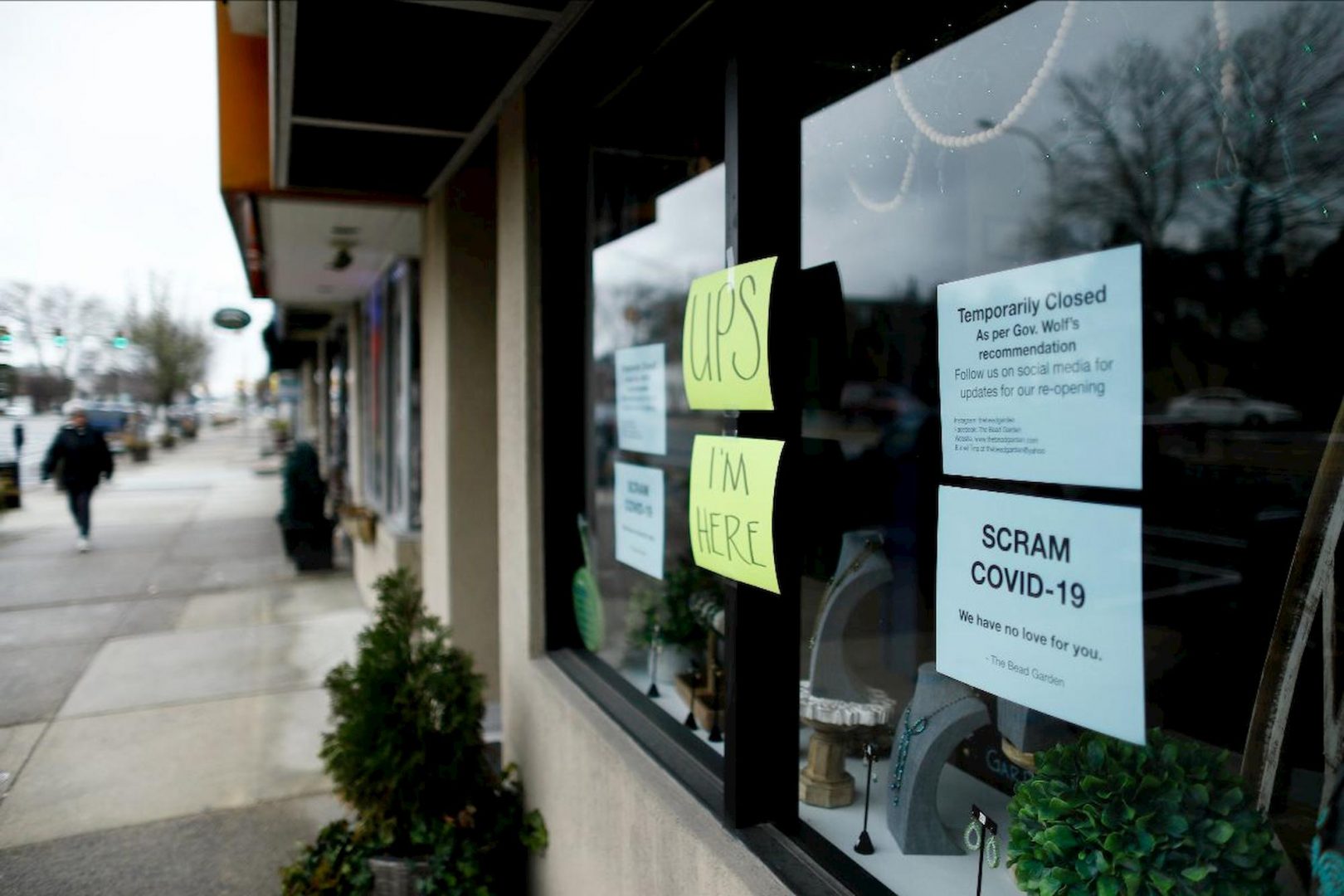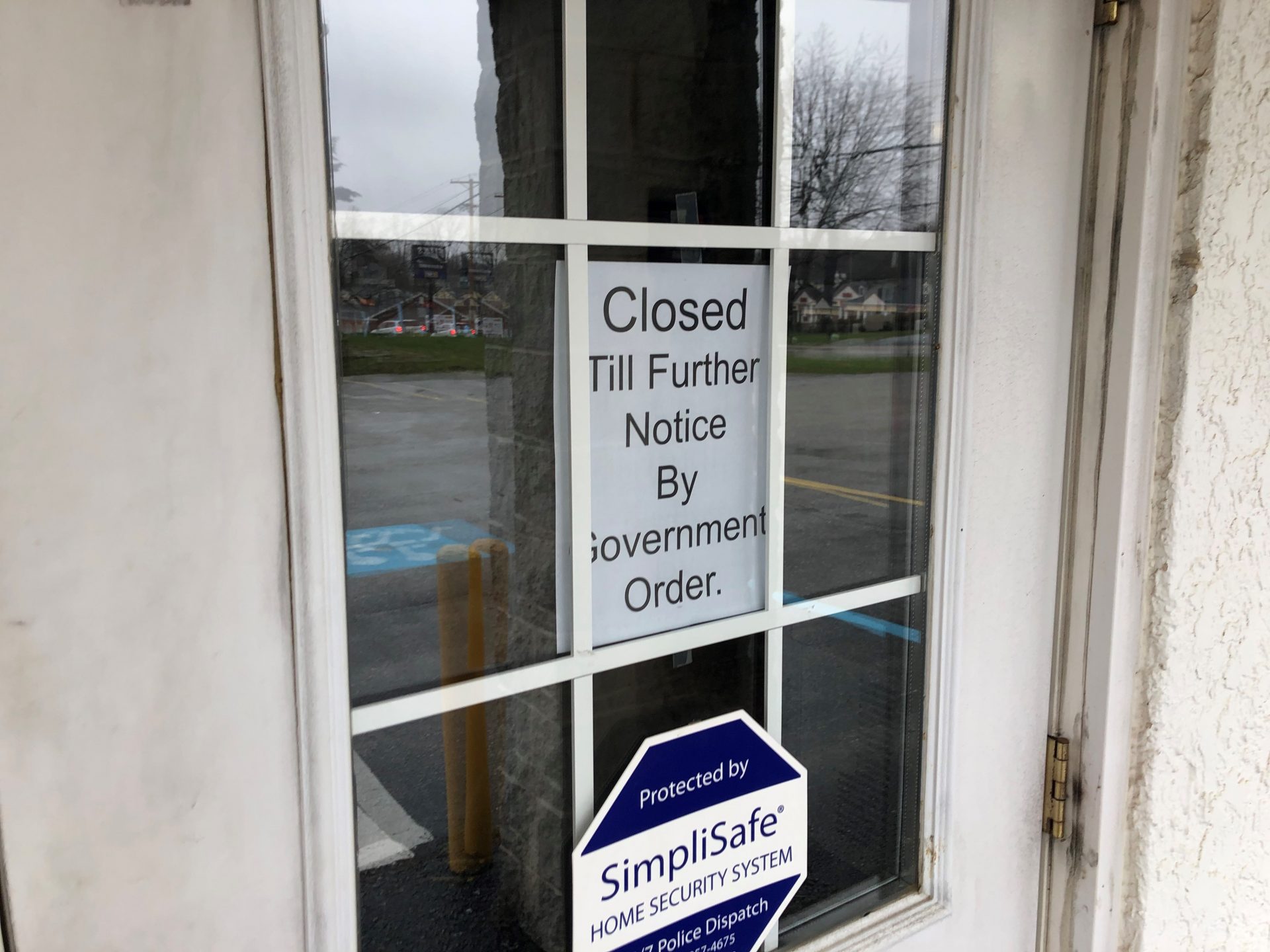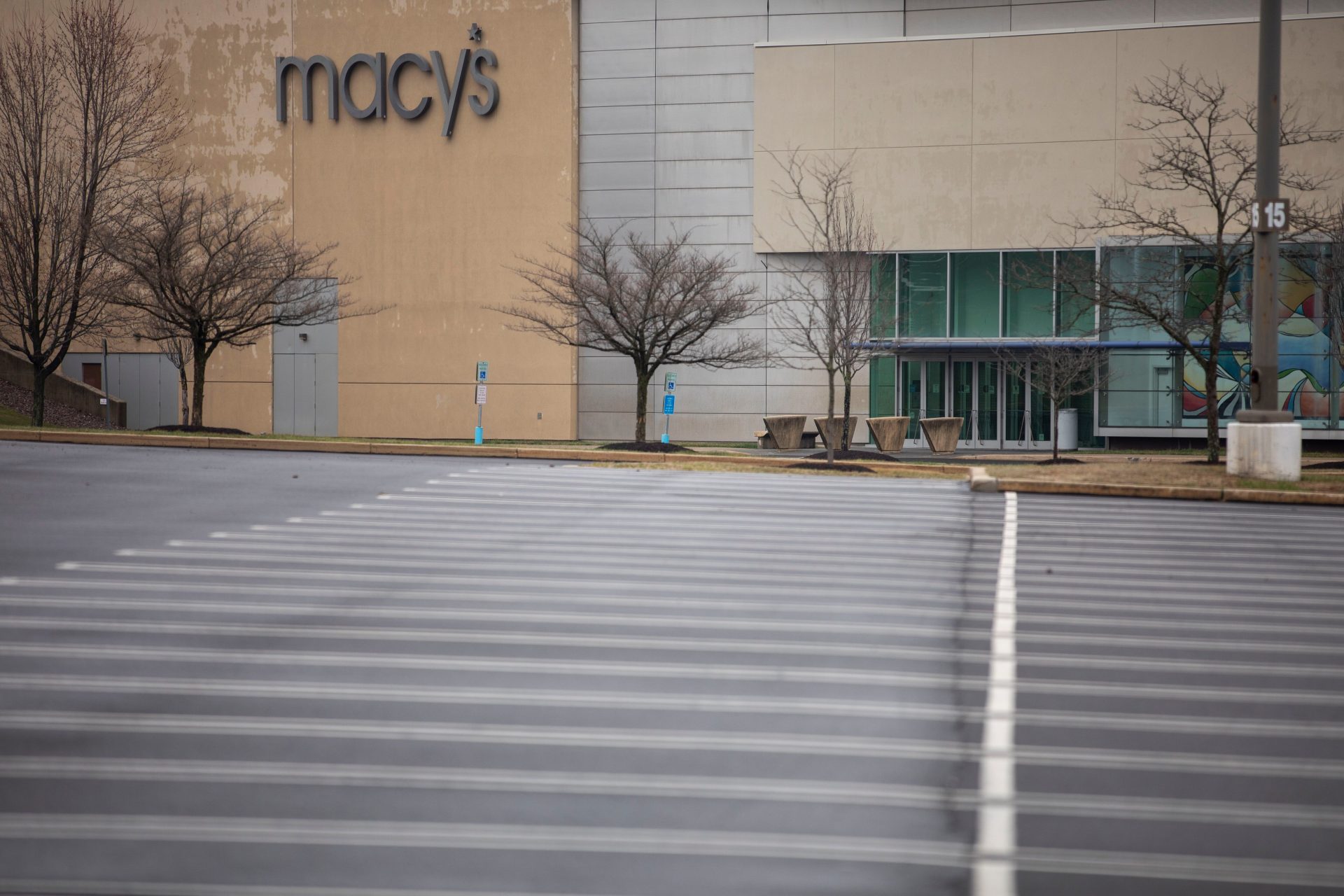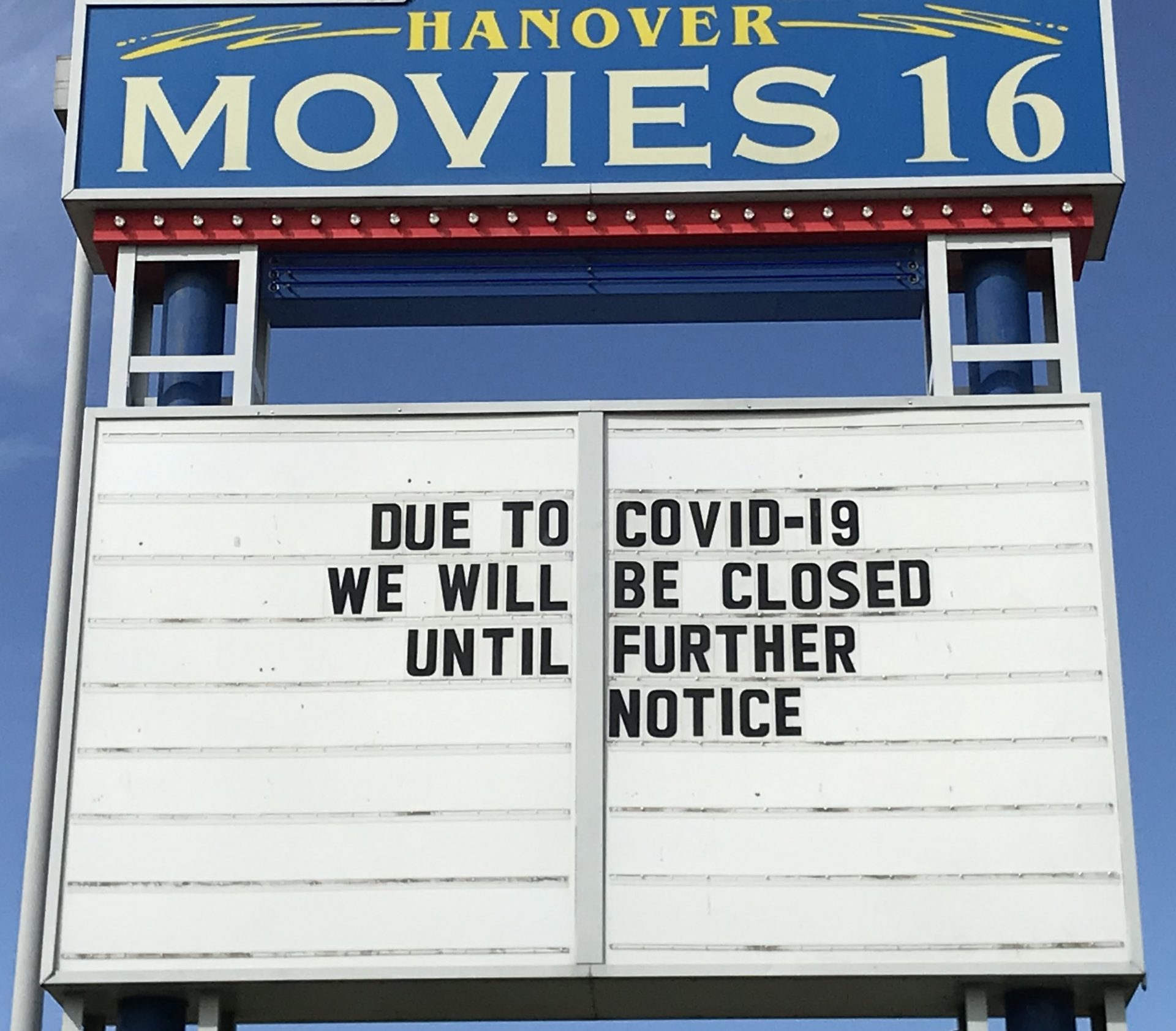
A person walks past a closed craft store, Tuesday, March 17, 2020, in Havertown, Pa. Concerns about the new coronavirus have led to the temporary closure of many businesses and schools across the region.
Matt Slocum / AP Photo

A person walks past a closed craft store, Tuesday, March 17, 2020, in Havertown, Pa. Concerns about the new coronavirus have led to the temporary closure of many businesses and schools across the region.
Matt Slocum / AP Photo

Matt Slocum / AP Photo
A person walks past a closed craft store, Tuesday, March 17, 2020, in Havertown, Pa. Concerns about the new coronavirus have led to the temporary closure of many businesses and schools across the region.
What you should know
» Coronavirus facts & FAQ
» Day-by-day look at coronavirus disease cases in Pa.
» It’s time to get serious about social distancing. Here’s how.
(Harrisburg) — The coronavirus contraction came fast and hard, forcing shutdowns of large segments of the American economy.
COVID-19 cases in the United States ticked past the 139,000 mark Sunday, more than in any other nation, and more than 2,400 deaths across the country have been linked to the virus. That’s the fast-moving public health toll.
But at least 200 million people nationwide have also been ordered to stay home as part of efforts to stop the spread, and early returns suggest that the first wave of economic victims of that combination punch are many of the economy’s low-wage and hourly workers — those who can least afford it.
They are the waiters and waitresses at your now-closed favorite restaurant. Construction workers whose job sites are shut down. Substitute teachers and teacher’s aides who — because they’re now employees of third-party providers — don’t have the same paycheck guarantees as regular school teachers during the COVID-19 school closures. Staff at most non-grocery retailers.

Ed Mahon / PA Post
A sign at a barbershop in southern York County references Gov. Tom Wolf’s March 19 order to close “non-life sustaining” businesses. (Ed Mahon / PA Post)
You can see their shadows in the darkened storefronts and empty parking lots that surround most businesses and entertainment venues across the state.
You can see it in the growing counts at places like Project SHARE in Carlisle, where Chief Executive Officer Bob Weed said his staff counted a 10 to 15 percent uptick in the number of families seeking food distributions this week.
And you can see it in the soaring numbers of applicants for unemployment benefits; a record 3.3 million Americans applied through the week ending March 21, the U.S. Labor Department said Thursday. More than 500,000 of them were Pennsylvanians.
Daniel Alpert, an economist and managing partner of Westwood Capital LLC, told PennLive this week he won’t be surprised if the pandemic throws at least 10 to 12 million workers out of work, enough to cause the national unemployment rate to soar to levels last seen during the so-called Great Recession of 2007-08, if not higher.
Three quick case studies show why.
Andy Lee owns and operates two restaurants in the Lehigh Valley, both of which have had to close under Gov. Tom Wolf’s mandated closure of all of the state’s roughly 10,000 liquor licensees on March 17.
For Lee, that meant laying off 52 people – all but two of his full-time employees and two servers to run curbside take-out service from his Braveheart Highland Pub in Hellertown. It’s doing about one-tenth of his regular volume, Lee says.
“We were having the best year of our lives, to be honest, but it’s gone,” Lee told PennLive this week.
Jeannette Reeves saw her small business – an in-home day care center in Harrisburg – come to a screeching halt, too. With most of her clients now working from home, she’s lost her kids and her family’s main source of income. And as a recent cancer patient with a weakened immune system, she’s not eager to take new families on right away.
The Reeves are living off of their savings now, “so there’s no spending unless it’s necessary,” Reeves said this week. “And whatever we have at home, that’s what we’re doing.”
In Cumberland County, Dave Cross of Mowery Construction has not laid off any of his 90 employees yet. But with most of his work sites shuttered — the firm did receive a state waiver to continue work at a distribution center in the Scranton area for a medical equipment firm — he’s not sure how long that will last.

Monica Herndon / Philadelphia Inquirer
Sales tax revenues will slump because businesses are closed and families are cutting back on spending.
“We’re honestly looking at it week by week,” Cross said Friday.
The dead stop facing all three of these companies — and thousands like them across the American economy — shows you exactly why economists know we’re in an economic contraction, and may be headed for a recession.
“The main issue is the uncertainty about how long the pandemic is going to last,” said Yeva Nersisyan, an associate professor of economics at Franklin & Marshall College in Lancaster. “How long is the economy going to be closed?”
Contraction or recession, there is a growing consensus on who is first in the path of this viral wrecking ball, and it is generally people in lower-wage, hourly positions who have the thinnest of financial cushions to fall back on.
Alpert is part of a team that has developed a research tool called the U.S. Private Sector Job Quality Index. They recently released an advisory list identifying 35 million jobs in 40 business sectors that, the authors feel, are “particularly vulnerable to cessation of economic activity due to the spreading pandemic” and the shelter-in-place recommendations that have followed.
Many of these businesses are loaded with front-line, customer-facing jobs that offer both low hourly wages – defined as less than the $802 weekly average for all production and non-supervisory jobs – and a limited number of hours of work per week. (For context, JQI has identified about 59.5 million such jobs across the total economy, with an average annual salary of about $28,000; some, like grocery and pharmacy clerks, are being hailed as heroes of the present moment, and have been rewarded with short-term pay boosts.)
Some of the bigger categories include: full-service restaurants (5 million workers); general merchandise retailers (2.8 million); hotels and other travel accommodations (1.7 million); entertainment venues like casinos and theaters (1.6 million); personal care services like hair stylists and nail salons (630,000).

Scott Blanchard / WITF
Entertainment businesses are among those closed by a shutdown imposed by Gov. Tom Wolf in an attempt to limit the spread of the coronavirus. A Hanover, Pa. movie theater sign is shown on March 21, 2020.
It’s also not new that the “little guy” is the first to fall. That’s been the story of every economic downturn since records have been kept. The difference here, Alpert said, is that “we’re far more dependent on these jobs than we were entering the Great Recession.”
Put another way, as measured by the United Way of Pennsylvania last year, some 37% of Pennsylvania households – or more than 1.8 million of 5 million total – don’t meet income levels that allow them to afford basic household necessities in their respective communities. That was up from 34% in 2007.
“In addition,” Alpert’s group noted, “there are several higher-quality job sectors – such as air transportation – that are seeing shutdowns due to industry-specific, as opposed to generalized consumer, inactivity” pushing the overall total of at-risk jobs to 37 million.
This is not to suggest that all of these jobs will be lost, Alpert noted. But they are the most at risk now, and it wouldn’t shock him, he said, to see the national unemployment rate hit double digits before this is over.
Alpert and F&M’s Nersisyan both called the $2 trillion economic rescue package developed by Congress and the Trump Administration this week a good start in building a safety net under the free-falling economy, especially with the four-month expansion of unemployment benefits by $600 per week that will take the average benefit check from about 45% of replacement income to more than 100% in many cases.
They also like the small business assistance designed to help employers like Lee and Cross, if they choose, take temporary government loans to cover short-term losses, and which — according to early descriptions of the program — will be forgiven if the firms keep their current payrolls intact.
The eight weeks of assistance would be retroactive to Feb. 15, 2020, to help bring back workers who have already been laid off.
But what no rescue bill can do is put an end date on the public health cause of the current crisis, and that’s why no one can say for sure whether this will be a V-shaped contraction – meaning a sharp, but short-lived downturn that will quickly give way to recovery.
That’s not just an “America” question, either, Nersisyan said, noting the worldwide track of the coronavirus will have great impacts on the supply chain for many commodities, products and markets.
In the meantime, businesses large and small are assessing the landscape, and trying to figure out what’s changed, and what’s the same.
At Mowery, Cross took heart Friday in the fact that, to date, none of his clients — developers of commercial warehouses, a car dealership in Lancaster, a major expansion of the Carlisle YMCA — have told him to pull the plug on their projects. That suggests, in his mind, some hope for the long-term.
Lee and other restaurateurs are a little more shaken.
“I definitely plan on reopening, but It’s going to be a very slow process,” Lee said, adding that he may not be able to bring all of his staff back at once because of what he expects will be a coronavirus hangover for many public gathering spots. He foresees removing a couple of tables from his dining room to give patrons a little more social distance.
“I just don’t see people running to the restaurant and wanting to hang out all night when this thing is still hanging its ugly head.”
At the Reeves Hill Early Learning Center, Jeannette Reeves knows that her clientele, mostly state workers, will have jobs to go back to someday, so she expects her home to be filled with children down the road, too.
But the big question everybody shares is, when?
“This is like we’re in a medically induced coma,” said Alpert. “We’ve deliberately put the economy into a coma, and we’ve done that so we could in fact fix a disease. The question is, when is it safe for the patient to come out of the coma?”
PennLive and The Patriot-News are partners with PA Post.

A collection of interviews, photos, and music videos, featuring local musicians who have stopped by the WITF performance studio to share a little discussion and sound. Produced by WITF’s Joe Ulrich.
The days of journalism’s one-way street of simply producing stories for the public have long been over. Now, it’s time to find better ways to interact with you and ensure we meet your high standards of what a credible media organization should be.